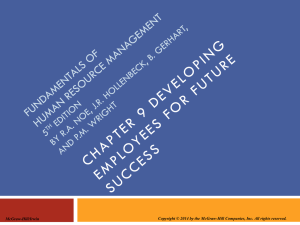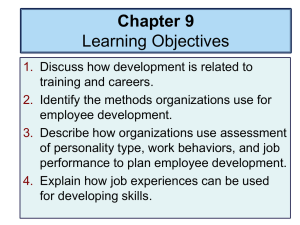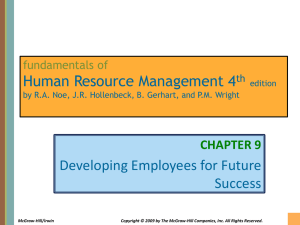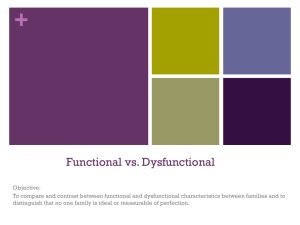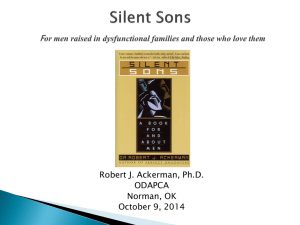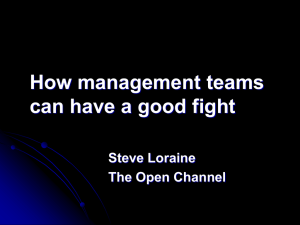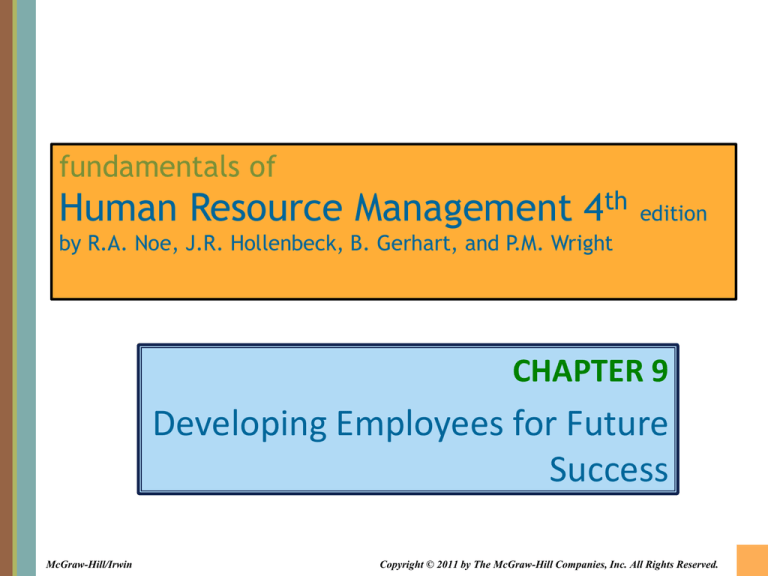
fundamentals of
Human Resource Management 4th
edition
by R.A. Noe, J.R. Hollenbeck, B. Gerhart, and P.M. Wright
CHAPTER 9
Developing Employees for Future
Success
McGraw-Hill/Irwin
Copyright © 2011 by The McGraw-Hill Companies, Inc. All Rights Reserved.
What Do I Need to Know?
1. Discuss how development is related to training
and careers.
2. Identify the methods organizations use for
employee development.
3. Describe how organizations use assessment of
personality type, work behaviors, and job
performance to plan employee development.
4. Explain how job experiences can be used for
developing skills.
9-2
What Do I Need to Know? (continued)
5. Summarize principles of successful mentoring
programs.
6. Tell how managers and peers develop
employees through coaching.
7. Identify the steps in the process of career
management.
8. Discuss how organizations are meeting the
challenges of the “glass ceiling,” succession
planning, and dysfunctional managers.
9-3
Introduction
• Employee development: the combination of
formal education, job experiences,
relationships, and assessment of personality
and abilities to help employees prepare for
the future of their careers.
• Development is about preparing for change in
the form of new jobs, new responsibilities, or
new requirements.
9-4
Table 9.1: Training versus Development
9-5
Test Your Knowledge
• Significant Developments: True (A) or False (B)?
– There are more horizontal “ladders” in middle
management than upward moves.
– Companies focus on employee’s career steps rather than
their core competencies.
– Careers are now more a series of projects, rather than
upward steps in an organization
– Career development primarily applies to managers.
– The organization manages employee’s careers more so
than the individual.
– The average 32-year old has already worked for 7 different
firms.
9-6
Development for Careers
• Protean career: a career that frequently
changes based on changes in the person’s
interests, abilities, and values and in the work
environment.
• To remain marketable, employees must
continually develop new skills.
9-7
Test Your Knowledge
• An employee starts out as a sales person, then
becomes an account manager, gets promoted
to sales manager, and is now VP of Sales.
Which type of career did this employee have?
A.
B.
C.
D.
Protean
Traditional
Glass ceiling
Dead end
9-8
Figure 9.1: Four Approaches to Employee
Development
9-9
Approaches to Employee Development
Formal Education
Assessment
• These may include:
• Collecting information and
providing feedback to
employees about heir
behavior, communication
style, or skills.
• Information for assessment
may come from the
employees, their peers,
managers, and customers.
–
–
–
–
–
–
Workshops
Short courses
Lectures
Simulations
Business games
Experiential programs
• Many companies operate
training and development
centers.
9-10
One way to develop employees is to begin
with an assessment which may consist of
assigning an activity to a team and seeing
who brings what skills and strengths to the
team.
9-11
Assessment Tools
Myers-Briggs Type Indicator (MBTI)®
Assessment Centers
Benchmarks Assessment
Performance Appraisal
360-Degree Feedback
9-12
Assessment Tools:
Myers-Briggs Type Indicator (MBTI)®
• It is a psychological test
that identifies
individuals’ preferences
for source of energy,
means of information
gathering, way of
decision making, and
lifestyle, providing
information for team
building and leadership
development.
• This is the most popular
test for employee
development.
• The assessment consists
of more than 100
questions about how the
person feels or prefers to
behave in different
situations.
9-13
Assessment Tools (continued)
Assessment Centers
• An assessment process in
which multiple raters or
evaluators (assessors)
evaluate employees’
performance on a number
of exercises, usually as they
work in a group at an offsite
location.
Benchmarks
• A measurement tool that
gathers ratings of a
manager’s use of skills
associated with success in
managing.
9-14
Table 9.2: Skills Related to Success as a
Manager
9-15
Assessment Tools (continued)
• Performance appraisals can be useful for
employee development under certain conditions:
1. The appraisal system must tell employees specifically
about their performance problems and ways to
improve their performance.
2. Employees must gain a clear understanding of the
differences between current performance and
expected performance.
3. The appraisal process must identify causes of the
performance discrepancy and develop plans for
improving performance.
9-16
Assessment Tools (continued)
• 360-degree feedback can be used for development
purposes:
1. The rater would identify an area of behavior as a
strength of the employee or an area requiring further
development.
2. The results presented to the employee show how he or
she was rated on each item and how self-evaluations
differ from other raters’ evaluations.
3. The individual reviews the results, seeks clarification
from the raters, and sets specific development goals
based on the strengths and weaknesses identified.
9-17
Test Your Knowledge
• Sarah participated in leaderless group
discussions and in-basket exercises and was
observed by a number of raters. Which
assessment method was used for Sarah?
A.
B.
C.
D.
Interview
Performance appraisal
Assessment Center
Coaching
9-18
Approaches to Employee Development
(continued)
• Job experiences: the
combination of
relationships, problems,
demands, tasks, and
other features of an
employee’s jobs.
• Most employee
development occurs
through job experiences.
• Key job experience
events include:
– Job assignments
– Interpersonal
relationships
– Types of transitions
• Through these
experiences, managers
learn how to handle
common challenges, and
prove themselves.
9-19
Figure 9.2: How Job Experiences Are Used
for Employee Development
9-20
Working outside one’s home country is the
most important job experience that can
develop an employee for a career in the
global economy.
9-21
Approaches to Employee Development
(continued)
• Interpersonal relationships: employees can
also develop skills and increase their
knowledge about the organization and its
customers by interacting with a more
experienced member:
– Mentoring
– Coaching
9-22
Figure 9.3: Steps and Responsibilities in
the Career Management Process
9-23
Test Your Knowledge
• Phyllis is in the process of understanding what
possibilities exist for her within the
organization based on her strengths and
developmental areas. Which phase of the
career management process is she in?
A.
B.
C.
D.
Self Assessment
Reality Check
Goal Setting
Action Planning
9-24
Career Management System (continued)
Data Gathering:
Self-Assessment
• The use of information by
employees to determine
their career interests,
values, aptitudes,
behavioral tendencies, and
development needs.
• MBTI
• Strong-Campbell Interest
Inventory
• Self-Directed Search
Feedback
• Information employers give
employees about their skills
and knowledge and where
these assets fit into the
organization’s plans.
9-25
Figure 9.4: Sample Self-Assessment
Exercise
9-26
Career Management System (continued)
Goal Setting
• Based on the information
from the self-assessment
and reality check, the
employee sets short- and
long-term career objectives.
–
–
–
–
Desired positions
Level of skill to apply
Work setting
Skill acquisition
Action Planning & FollowUp
• Employees prepare an
action plan for how they will
achieve their short- and
long-term career goals.
• Any one or a combination of
development methods may
be used.
• Approach used depends on
the particular development
need and career objectives.
9-27
Figure 9.5: Career Development Plan
9-28
Development-Related Challenges
Glass Ceiling
• Circumstances
resembling an
invisible barrier
that keep most
women and
minorities from
attaining the top
jobs in
organizations.
Succession
Planning
Dysfunctional
Managers
• The process of
identifying and
tracking highpotential
employees who
will be able to fill
top management
positions when
they become
vacant.
• A manager who
is otherwise
competent may
engage in some
behaviors that
make him or her
ineffective or
even “toxic” –
stifles ideas and
drives away good
employees.
9-29
• Indra Nooyi became the first woman CEO of
PepsiCo in 2006.
• Her success at the company gives her the
distinction of being one of the women to break
through the glass ceiling.
9-30
Figure 9.6:
Process for
Developing a
Succession Plan
9-31
Dysfunctional Managers
• A manager who is
otherwise competent
may engage in some
behaviors that make
him or her ineffective –
someone who stifles
ideas and drives away
employees.
• These dysfunctional
behaviors include:
– insensitivity to others
– inability to be a team
player
– arrogance
– poor conflict management
skills
– inability to meet business
objectives
– inability to adapt to change
9-32
Dysfunctional Managers (continued)
• When a manager is an otherwise valuable employee
and is willing to improve, the organization may try to
help him or her change the dysfunctional behavior:
– Assessment
– Training
– Counseling
• Specialized programs include Individual Coaching for
Effectiveness (ICE)
– This includes diagnosis, coaching, and support activities
tailored to each manager’s needs.
9-33
Summary
• Employee development is the combination of formal
education, job experiences, relationships, and
assessment of personality and abilities to help
employees prepare for the future of their careers.
• Training is more focused on improving performance
in the current job, but training programs may
support employee development.
9-34
Summary (continued)
• In modern organizations, the concept of a career is
fluid – a protean career that changes along with
changes in a person’s interests, abilities, and values
and changes in the work environment.
• To plan and prepare for a protean career requires
active career management, which includes planning
for employee development.
• Assessment can help the organization identify
employees with managerial potential or identify
areas in which teams need to develop.
9-35
Summary (continued)
• Assessment centers combine a variety of methods to
provide assessment information. Managers must
share the assessments, along with suggestions for
improvement.
• Job experiences contribute to development through
a combination of relationships, problems, demands,
tasks, and other features of an employee’s jobs.
• Organizations can ensure that women and minority
employees receive access to development resources
such as coaches and mentors.
9-36
Summary (continued)
• Effective succession planning includes methods for
selecting high-potential employees, providing them
with developmental experiences, and getting the
CEO actively involved with these employees.
• For dysfunctional managers who have the potential
to contribute to the organization, the organization
may offer development targeted at correcting the
areas of dysfunction.
9-37

